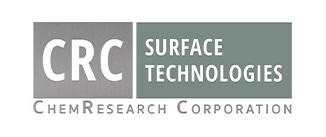
11 Jul How Passivation Helps Stainless Steel Last Longer in Harsh Environments
Stainless steel is known for its strength and corrosion resistance. But even this highly durable material needs extra protection in extreme environments. When stainless steel components are exposed to chemicals, saltwater, moisture, or fluctuating temperatures, their corrosion resistance can quickly degrade. That’s where stainless steel passivation comes in.
In this article, we’ll explain how stainless steel passivation works and how it can extend the lifespan of components that must endure harsh operating conditions.
The Stainless Steel Passivation Process
Passivation is a chemical process that makes stainless steel parts even more resistant to corrosion. The part is treated with an acid solution (typically nitric or citric acid) that strips away free iron and other surface contaminants.
At the same time, it strengthens the thin, protective oxide layer that makes stainless steel naturally resistant to corrosion. By strengthening this layer, passivation can restore or improve the natural defenses of stainless steel.
Common Applications for Passivated Stainless Steel
The passivation process is widely used—it can be applied to stainless steel components for aerospace and marine applications, as well as food processing and medical equipment.
For example, passivation can improve:
- Aerospace components exposed to jet fuel and hydraulic fluids
- Marine hardware exposed to saltwater spray
- Food processing equipment that requires a sanitary finish
- Medical devices that must resist corrosion from sterilization procedures
- Chemical processing tanks
- Exterior architectural components
Why Stainless Steel Needs Passivation
Even though stainless steel is “stainless” by name, the manufacturing, welding, machining, or handling processes can introduce tiny particles of free iron and other contaminants onto its surface.
These contaminants can disrupt the integrity of the protective chromium oxide layer, leading to:
- Pitting and localized corrosion
- Rust spots or discoloration
- Early failure or reduced lifespan
Passivation is required to remove these embedded contaminants and regenerate the protective layer. It results in a clean surface with high corrosion resistance.
How Passivation Extends Lifespan
When stainless steel components are exposed to moisture, corrosive chemicals, or extreme temperatures, they degrade far more quickly. Passivation can extend the lifespan of stainless components by making them more resistant to rust, easier to clean, and less likely to fail or stain.
The benefits of stainless steel passivation include:
1. Corrosion Resistance
By removing impurities and promoting the growth of a uniform oxide layer, the passive (non-reactive) layer shields the substrate from environmental damage and slows down the corrosion process. As a result, passivation significantly reduces the risk of rust or chemical corrosion, even in salty, humid, or acidic environments.
2. Contaminant Resistance
A clean, passive surface is not only more corrosion-resistant, it’s also smoother and less likely to harbor contaminants, residues, or bacteria. A smooth, contaminant-free surface resists buildup and is easier to clean and sterilize. This is especially important for applications in the food processing and pharmaceutical industries.
3. Longer Service Life
Passivated stainless steel resists degradation over time, reducing the frequency of replacements and lowering long-term maintenance costs. There is no definitive timeline on how long passivation lasts, but there are many factors that can affect how long it lasts, such as frequency of use and physical damage. For optimal performance, stainless steel should be re-passivated at least once a year.
4. Prolonged Appearance
Passivated stainless steel retains its clean, bright appearance longer, even in outdoor environments. Exterior architectural elements, food service equipment, and consumer products all benefit from stainless steel’s sleek, professional appearance.
Extend the Life of Your Stainless Steel Components with Professional Passivation
Metal finishing processes like passivation require precise handling, proper preparation, and strict quality control. At CRC Surface Technologies, our passivation process is engineered to meet industry standards, including AMS-QQ-P35, ASTM-A-967, and AMS2700 types II, VI, and VIII.
Don’t let harsh environments compromise your stainless steel parts—choose passivation services from a professional. We’ll help you keep your equipment and components looking and performing like new. Call us at 602-253-4175 today or email rfq@chemresearchco.com to request a quote.
Images used under creative commons license – commercial use (7/11/2025). Photo by Crystal Kwok on Unsplash

